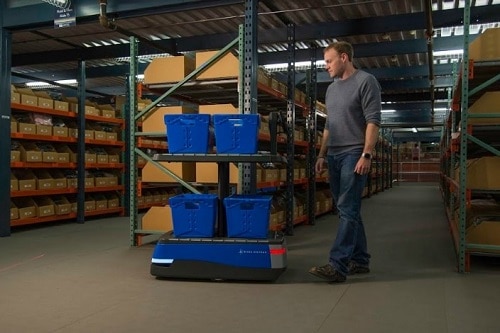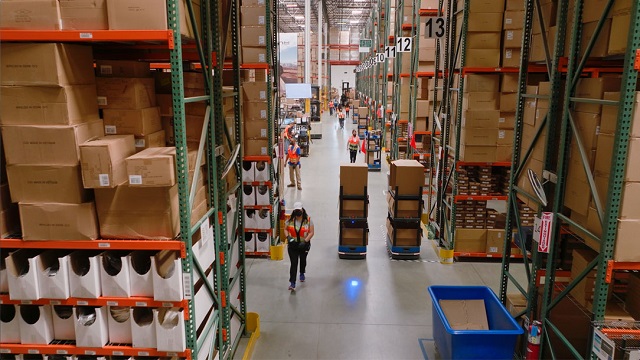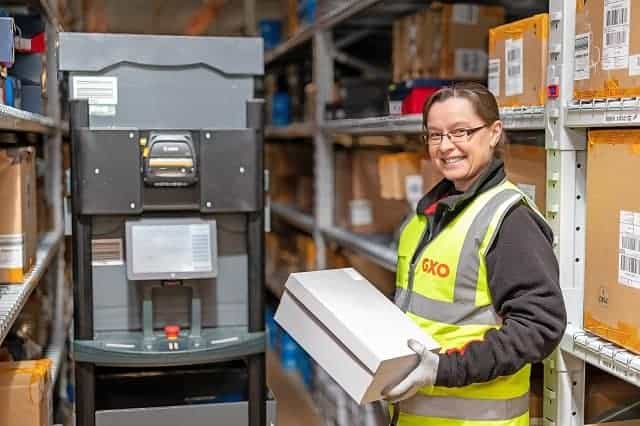Consumers are increasingly switching between online and offline means to shop for products and services, driving demand for omnichannel retailing. The goal of omnichannel retailing is to meet consumers’ desire for a seamless shopping experience across channels, which may include physical stores, eCommerce websites, phone, chat, text, mobile apps and online marketplaces. However, there are several omnichannel retailing challenges for retailers to overcome to provide the seamless, cross-channel shopping experience today’s consumers prefer.
According to BRP’s 2019 Unified Commerce Survey, 87% of consumers want a personalized and consistent experience across channels, yet only 71% of retailers have plans that allow consumers to start and complete purchases on different channels. For example, just 28% of retailers offer a shared cart across channels, such as desktop browsers and mobile devices, making it challenging for consumers to shop on their mobile device and complete a purchase on a desktop or laptop. Here’s a look at some common omnichannel retailing challenges and three ways to solve them to increase profits.
Multichannel vs. omnichannel retailing

Many retailers today offer multichannel retailing, allowing consumers to make purchases and engage through their preferred channel, such as an eCommerce website or a brick-and-mortar storefront. However, multichannel retailing treats each channel as a silo, which can lead to a disjointed experience for consumers who make use of multiple channels throughout the buying journey, such as browsing an eCommerce website to locate products of interest and then making the purchase at a nearby brick-and-mortar store.
In the case of multichannel retailing, a product purchased through one channel typically cannot be returned through another channel. For example, if a customer purchases a clothing item online, they may not be able to return it to the retailer’s physical store.
Omnichannel retailing requires back-end integration between communications, promotion and distribution. That means customers can browse products on a website, make a purchase later through their smartphone, and then eventually pick the product up in a physical store. Omnichannel retailing and puts the customer at the center instead of the product, providing inventory visibility and seamless shopping and customer service experiences across every channel.
In omnichannel retailing, customers can check local inventory on their smartphone before visiting a brick-and-mortar retail store or make a purchase online and pick it up in a physical retail store within a few hours. When shopping in a physical retail store, they can use their mobile devices to compare prices and read product reviews before making a purchase. Rather than a series of distinct, siloed shopping experiences, every channel is interwoven and connected in omnichannel retailing. There are plenty of compelling reasons to adopt omnichannel retailing, including:
- Increased profits: According to Harvard Business Review, 73% of customers use several channels during their shopping journey. A study of 46,000 shoppers found that omnichannel customers spent an average of 4% more on every shopping visit to a physical store and 10% more online compared to single-channel customers. For every additional channel customers used throughout the buying journey, they spent more money in the store. Customers who used 4 or more channels spend 9% more on in-store purchases compared to single-channel customers.
- Better customer experience: There are customers who don’t shop online but prefer to visit the store. Some may have no time to visit, so they order online. With omnichannel, customers have the freedom to interact with your business any way they want. The COVID-19 pandemic highlighted this strength of omnichannel retailing, with retailers not limited to physical stores and those already set up with buy online, pick up locally options having a competitive advantage. Moreover, customers can switch channels for convenience or personal preference.
- Customer loyalty: In the same study reported in Harvard Business Review, omnichannel customers had 23% more repeat shopping trips within 6 months compared to those who used a single channel. Omnichannel customers are also more likely to recommend the brand, leading to more sales and increased profits.
How to solve the biggest omnichannel retailing challenges to boost profits
Despite the benefits, omnichannel retailing is not without any risks and challenges. According to a study by 1WorldSync, cross-channel commerce challenges resulted in 45% of sellers and suppliers losing more than $1 million in revenue and another 13% losing more than $3 million. To succeed in omnichannel retailing, businesses must break down the barriers between online and physical stores. Here are three ways to solve the biggest omnichannel retailing challenges to boost profits.
Integrate offline and online platforms & channels
Having excellent products isn’t enough to keep customers. In multichannel retailing, a business may be managing fewer channels, and typically, one channel is paramount over others and given the most focus. But in omnichannel retailing, neglecting one channel risks losing customer engagement, sales and loyalty.
To succeed in omnichannel retailing, retailers should integrate their online and offline platforms for a seamless shopping experience. Marketing strategies should incorporate all channels and provide a unified brand experience across all touchpoints. Retailers should also ensure that all channels have equal amounts of control and distribution.
Update technologies and processes

Obsolete technologies and processes lead to a host of challenges for retailers, such as slow or unresponsive websites, delays and lengthy queues for in-store pickups and obsolete order tracking processes that leave customers in the dark about where their purchases are and when they’ll arrive. Manual processes in warehousing and distribution bog down order fulfillment processes, and staff shortages, especially during peak times, compound these issues.
Retailers adopting an omnichannel retailing model should update their technology and other investments to ensure that their infrastructure is up to the task of managing omnichannel complexities. One global home goods retailer streamlined omnichannel fulfillment by implementing 6 River Systems’ collaborative robotics solution. With eCommerce driving most of the retailer’s fulfillment needs, the retailer struggled to dedicate adequate resources to store replenishment. In just three months after implementing 6 River Systems’ collaborative mobile robots, the retailer realized a 62% increase in pick rates and ensured greater accuracy in ordering, resulting in fewer mispicks and happier store managers.
Collaborative mobile robots are a flexible automation solution that’s faster to implement and less costly compared to traditional automation systems, such as conveyors. Collaborative robotics companies like 6 River Systems also enable warehouse operators to rent additional units to accommodate demand during peak periods and return them when demand returns to baseline, making it possible for omnichannel retailers to adapt to shifts in demand with ease.
Optimize inventory management
Poor synchronization and the disuse of data leads to retail inventory management challenges (duplicate stocks, overstocks, out of stocks, supply-demand discrepancies). Retailers who prioritize inventory allocation and management on the most active channels miss out on sales from less-active channels.
For example, if a retailer can’t fulfill a buy-online, pickup in-store (BOPIS) order because the item is out of stock due to in-store purchases, that is a negative experience for the customer. When customers are unhappy, there’s a 91% chance they won’t do business with that company again. What’s more, dissatisfied customers tell as many as 15 to 20 people about their negative experience, which can damage a retailer’s reputation.
Prioritize making your inventory visible across all channels, ensuring that SKUs are consistent across channels for easy recognition. Watch out for overstocking or duplication of stocks. Balance the stocks between physical and online shops by reducing the availability of high-velocity products on online channels, while maintaining steady replenishment with optimized re-order points. Streamline your order fulfillment to meet customers’ delivery expectations and provide an efficient returns process, processing returns and replacements through all channels, regardless of the purchase channel.
Wrapping up
With the challenges brought by the COVID-19 pandemic, going the omnichannel route is likely to pay off for many businesses. By addressing common omnichannel retailing challenges with full channel integration, the right technologies and processes, and inventory management practices that are up to the task of meeting omnichannel expectations, retailers can provide a positive, seamless customer experience that drives sales, increases customer loyalty and boosts profits.
Check out our webinar, Optimize Fulfillment with Collaborative Robotic Picking, to learn more about how collaborative mobile robots like Chuck by 6 River Systems can help your company meet the demands of omnichannel retailing by speeding fulfillment processes.


